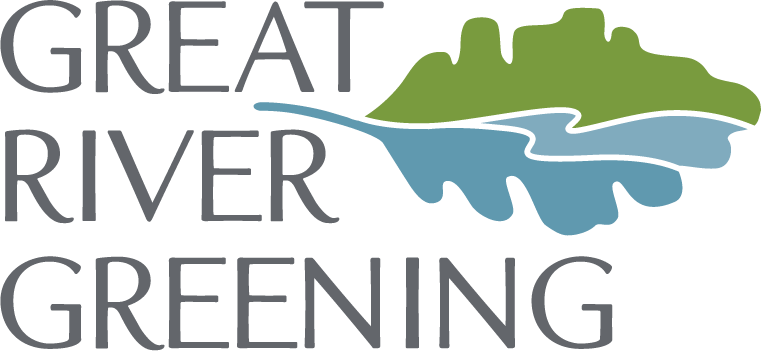Great River Greening was launched in the heart of Saint Paul with a community-driven effort to restore the Mississippi Riverfront for the benefit of local habitat, water quality, and people.
Since then, we have focused on restoring and revitalizing urban and community green spaces. Working in collaboration with community leaders and stakeholders, Greening works in urban and community spaces, with a focus on:
Local and Regional Parks
Great River Greening’s work in these spaces improves pollinator habitat, expands tree canopy, improves air quality, improves biodiversity, and improves water quality. It also welcomes people to connect with and enjoy healthy green spaces in their own communities.
Community and Urban Lands
Learn about our Cooling Minnesota Communities program - a massive tree planting initiative to plant and maintain over 10,000 trees across Minnesota.

FAQs
-
A tree canopy refers to the layer of leaves, branches, and stems of trees that cover the ground when viewed from above. This "green roof" created by the treetops plays a crucial role in maintaining healthy ecosystems and providing numerous benefits to both the environment and local communities. Benefits include enhancing biodiversity, improved air quality, sequestering and storing carbon and mitigating urban heat island effects.
-
Restoring parks improves biodiversity by creating habitats for various species, enhances recreational opportunities for the community, improves water quality through better stormwater management, and increases the overall aesthetic and health benefits of green spaces. Local and regional parks also provide close access to green spaces.
-
Restoring pollinator habitats supports essential pollinators such as bees, butterflies, and other insects, which are crucial for plant reproduction. This, in turn, enhances urban biodiversity, improves food supply for humans and wildlife, and contributes to healthier ecosystems.
-
These terms are both used as Great River Greening works in cities that are more “urban” such as Saint Paul and Minneapolis and the surrounding metro, as well as communities throughout the state. Larger cities like St. Cloud, Mankato, Faribault and Owatonna but also much smaller communities as well.
-
Great River Greening works closely with the community to gather input, especially in more densely populated areas. Partnerships with neighborhood groups, nonprofit organizations, faith communities, schools, youth organizations and clubs, and more provide the connection to community. Greening also request feedback directly from residents through online surveys, community meetings, and one on one conversation. New projects in these spaces often arise thanks to community groups or members reaching out for support.
-
Community members can volunteer for planting and maintenance events, participate in educational workshops and trainings, and become advocates for urban greening initiatives. Great River Greening often hosts events where volunteers can help with hands-on restoration work. Check out our current list of events here!

